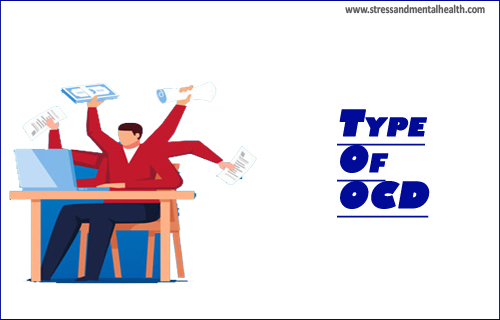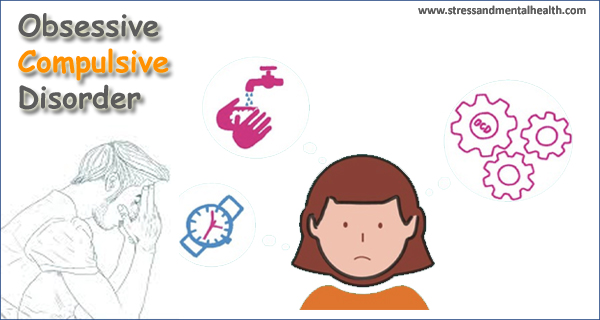“Obsessive compulsive disorder (OCD) is a disorder in which people have frequent, unwanted thoughts, ideas, thinking, sensation (Obsession) that make them think driven to do something or act forcefully repetitively (Compulsion). It is due to a genetic or hereditary, chemical, structural and functional abnormality in the brain.”
Obsessive Compulsive Disorder
Obsessive Compulsive Disorder is a common disease and approximately 2% to 3 % of persons all over the world are suffering from this disease. It is characterized by recurrent, persistent, unwanted, and intrusive thoughts, urges, or images (Obsessions) or by repetitive behaviors or mental acts that Patients feel driven to do. So it is a mental illness that causes unwanted thoughts and sensations or urges to do something or act over and over again Treatment consists of psychotherapy and drug therapy and in severe cases, both therapies are required. It is more common among women than men.
Many patients who are suffering from Ocd know that their thoughts and habits do not make any sense and also they do not enjoy that but they cannot quit. As soon as they stop they again start again.
obsessive-compulsive disorder Patient thinks that his hands are dirty and start to wash his hands repeatedly. Though he has locked his shop properly he thinks that he has not put the lock on the door of the shop and used to see the lock repeatedly. So repetition of similar work or act falls under this category.
Many types of Obsessive Compulsive Disorder

1. Obsessive compulsive disorder
Ocd is unwanted thoughts, images that usually caused distress and anxiety. Sometimes the patient feels that he is contaminated with dirt or germs. Though his hands are clean he repeatedly starts to wash the same with soap. He has closed the door or locks the same but he again checks the same.
2. Body Dimorphic Disorder
It usually begins during adolescence and is more common in women. Symptoms develop gradually. The face or head or any other part of the body has involved a change from one part to another part of the body over time. The patient may worry about thinning hair, pimples, scars or excessive body hair, etc.
3. Body focused Repetitive behavior disorder
Ocd Patient suffering from this disease used to busy in some unwanted activity such as nail-biting, lip biting cheek chewing. By doing so they change the physical look of the same and feel satisfied that they have done the proper acts.
4. Excoriation (Skin-Picking) Disorder
It is characterized by recurrent picking of one’s skin resulting in skin lesions, pimples, warts,s, etc. It is a mental health condition that occurs during stress. Patient scratches their skin.
5. Hoarding Disorder
Patients have a strong need to save items, accumulate a large number of items, For example, the stake of the hoarded newspaper may fill the sink and cover the countertop and stove, thus preventing these areas to cook meals. Hoarding symptoms sometimes make the house embarrassed by clutter. It results in unsafe living conditions. Hoarding of animals or birds.
6. Olfactory Reference Syndrome
The patient thinks that they emit a foul or offensive body odor, which is not perceived by others. They repeatedly smell themselves and use perfume or deodorant, And They use to wash their body with soap again and again and feel satisfied. They put scents on their clothes to get rid of the odor.
7.Trichotillomania
Obsessive-Compulsive Disorder is characterized by recurrent pulling out of one’s hair resulting in hair loss. The Trichotillomania patient repeatedly plucks out their hair for noncosmetic reasons. Most patients pull hair from eyebrows, eyelids due to tension or anxiety. In many case-patient wants to stop this habit but is unable to do so. The pattern of hair loss varies from patient to patient. Some patient has an area of complete alopecia or missing eyelashes or eyebrows or thinned hair. Some patient pulls the hair of others or pets.
| Food to avoid if you have anxiety or depression | Click Here |
| Difference between stress anxiety and depression | Click Here |
| Difference between Depression and anxiety | Click Here |
| Endogenous Depression | Click Here |
Treatment Of Ocd
Psychotherapy and drug therapy and in severe cases both therapies are used. Both the therapies are to be taken under the medical specialist’s supervision.
Frequently Asked Question About Obsessive-Compulsive Disorder
Q. What are 4 types of OCD?
Ans. The 4 types of OCD are contamination, perfection, doubt, and forbidden thoughts.
Q. How do you know if you are suffering from OCD or what are the symptoms of OCD?
Ans. Ans. Symptoms and signs of OCD are
– Fear of contamination by germs or dirt.
– Fear of losing control and doing self-harm or hurting others.
– Violent thoughts or imagine
– Excessive thinking on religious or ethical ideas.
Q. Does OCD get worsen with age?
Ans. Due to old age symptoms usually worsening, people may have difficulty in remembering when the OCD began.
Q. Can OCD go away?
Ans. OCD traits never truly go away and it requires ongoing management.
Q. Is OCD a type of anxiety disorder?
Ans. OCD is an anxiety disorder and is recurrent, unwanted thoughts or thinking and repetitive behaviors.
Q. What food should OCD patients eat?
Ans. First of all, they may eat protein items such as nuts seeds, eggs, beans, and meat, etc. And also consume complex carbohydrates items such as fruits, veggies, whole grains. These items help you to keep your blood sugar level steady and make your body fit and active.
